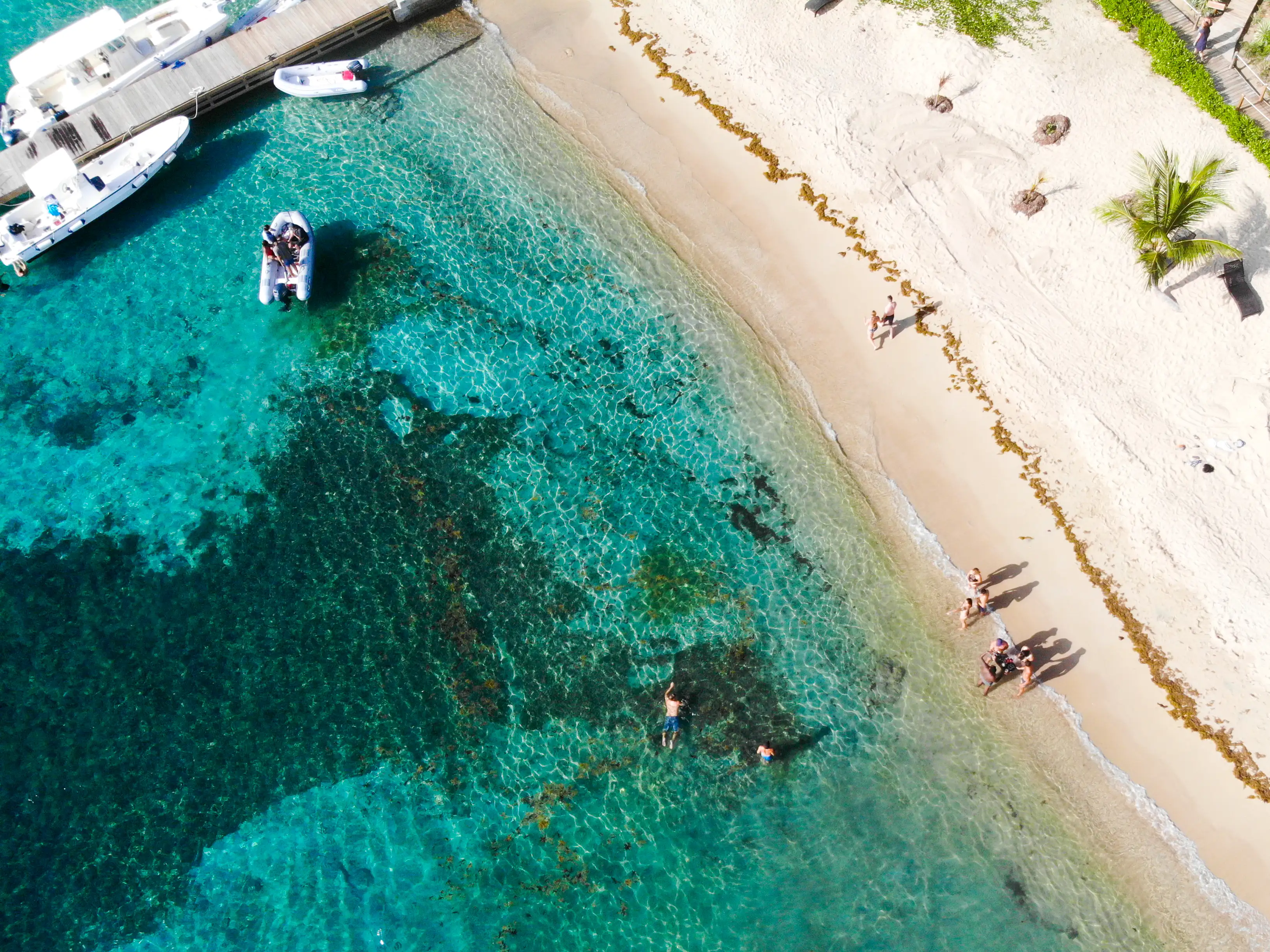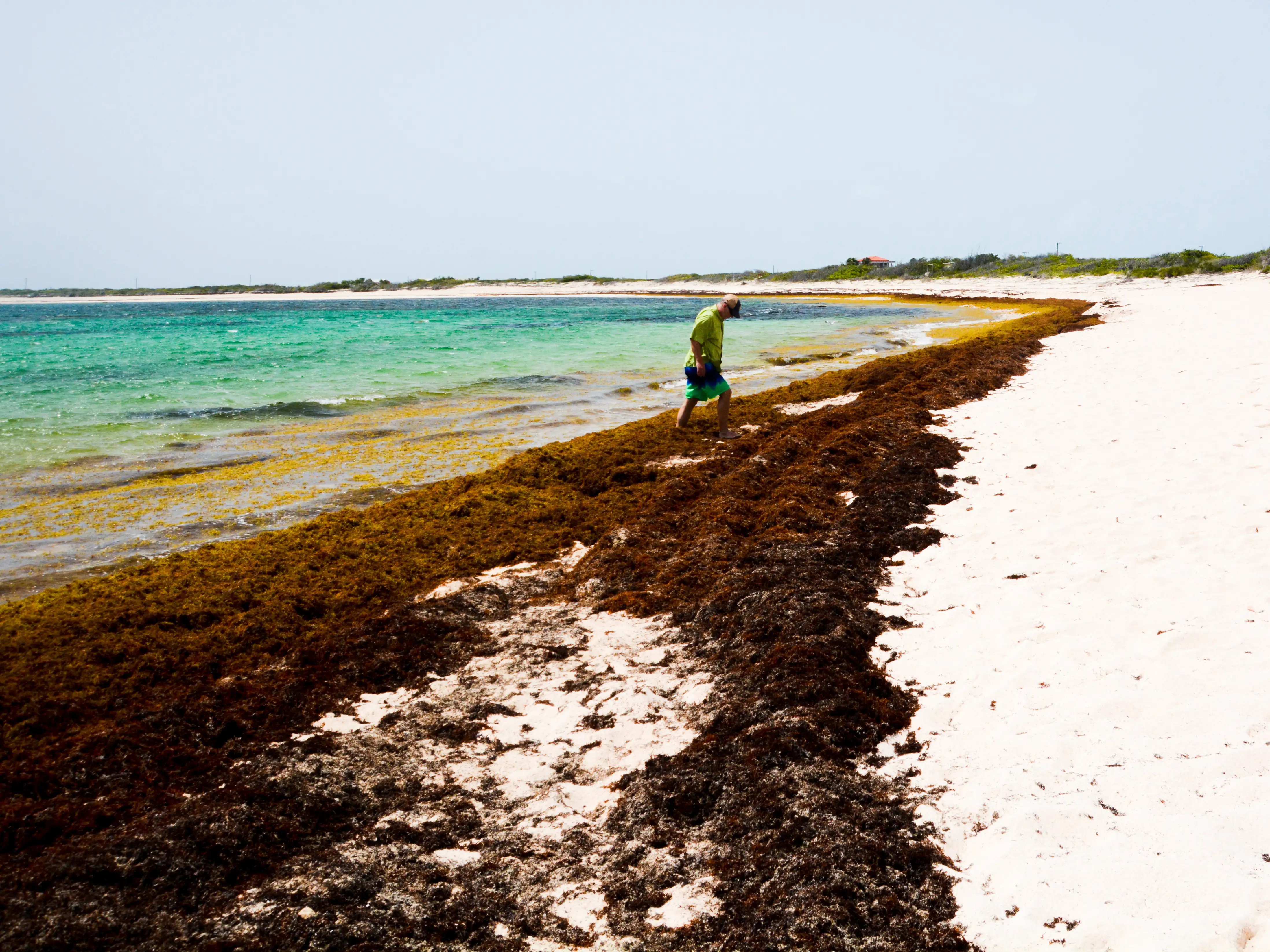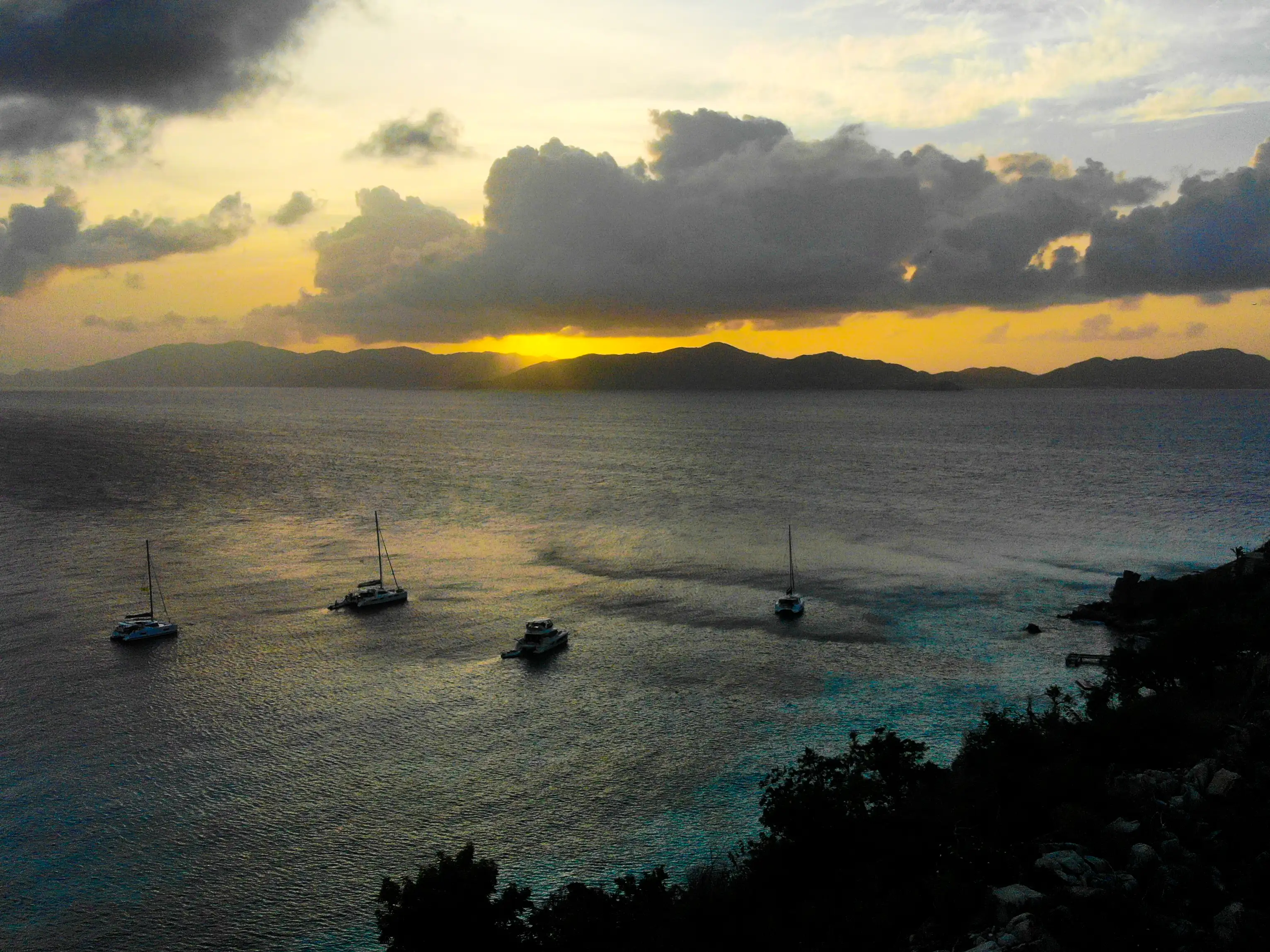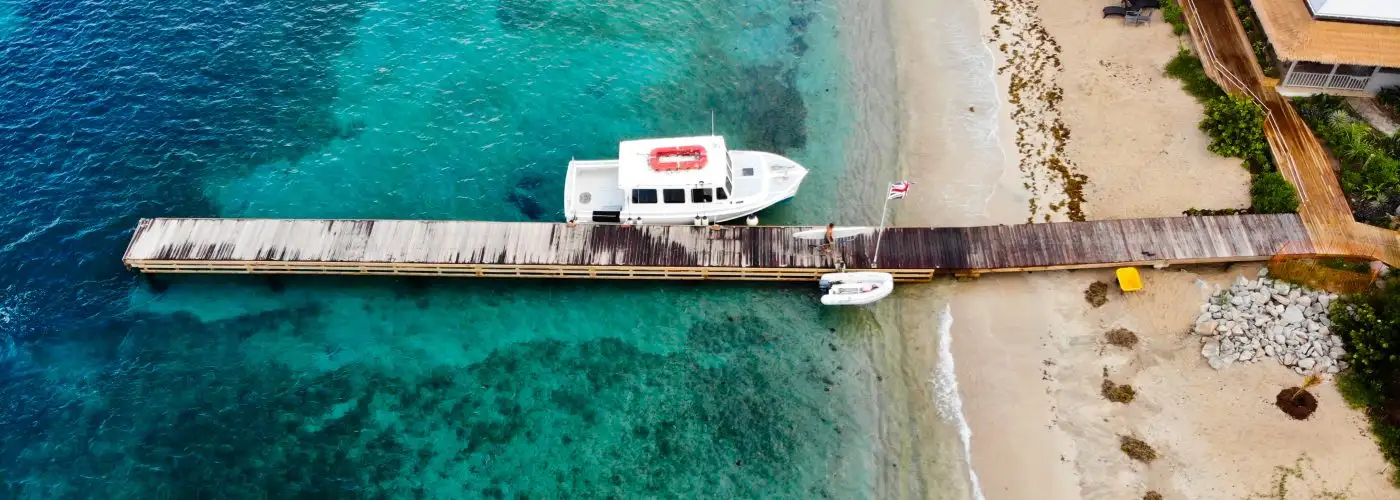“Irma was a bad woman.”
I’m in the passenger seat of a cab while visiting the island of Virgin Gorda when my taxi driver utters the name—Irma, the category five hurricane that pummeled the British Virgin Islands in 2017. On a Wednesday last September, Hurricane Irma hit the island chain with winds of up to 185 miles per hour, ripping up roofs, stripping the bark off trees, and destroying everything in its path.
“We’ve had category five storms before, but nothing like her. Never in my life have I seen something like that,” the cab driver says, shaking his head. And the islands’ struggle didn’t end with Irma; there was Hurricane Maria and the massive floods followed. For the first time in the territory’s history, the governor declared a state of emergency.
“She ain’t never allowed back here in the B.V.I.,” my driver went on. “We’re taking her passport away.”
As we rolled through the streets, my eyes lingered on traces of Irma’s destruction—dented boats hoisted onto grassy clearings and telephone poles perpendicular to the ground. It took six months before all of the islands in the B.V.I. had power restored. But by the time I landed in June, everything was back up and running.
The B.V.I. Are Waiting for You

The B.V.I. are more dependent on tourism than any other island chain in the Caribbean, and about half of the tourism dollars in the British Virgin Islands are earned on the water. When exploring these islands, many people do so by boat, waking up anchored near one island and spending the night anchored off another. More than 2,000 of the beds currently available in the B.V.I. are at sea on boats; after the storm, many charter companies returned and the sailing industry made a quick recovery.
Hotels, however, are recovering more slowly after last year’s hurricane season. At the time of writing, there are 627 hotel beds available on land, compared to 2,700 before the storm. The experience hasn’t been the same on every island. For instance, on Tortola, the most populated island, many hotels are still rebuilding, while on Anegada, many of the hotels and villas reopened as early as February.
On Cooper Island, an islet southeast of Tortola that’s accessible by private or charter boat, rebuilding has been a slow but determined process. At the eco-luxury Cooper Island Beach Club, the resort worked hard to restore everything—including a cafe that rivals any in Brooklyn, a micro-brewery, and a rum bar with the largest selection of rum in the Virgin Islands—in time for its early April reopening.
Restoring paradise is no small task. Irma took out two docks and swept five feet of sand off the beach. “Nearly everything needed to be fixed,” said Patrick Brady, the resort’s Sustainability Engineer. “We have replaced most of the components of the solar and electrical grid due to saltwater intrusion.” That’s key because the resort’s rooftop panels supply 85 percent of the on-site energy. And the damage went way beyond what’s visible to guests. “Water pumps and electrical appliances have also been replaced. We also cleaned and resealed every cistern on the property due to contamination from saltwater and vegetation.”
Once famous for its shady palm trees and large sea grape plants that lined the sand, the beach looks a little bare to returning guests. But Cooper Island Beach Club—which is a favorite stop among both visitors and locals—is back up and running, and is just as sustainable as it was before the storm. The beach is growing back, too, thanks to the Seeds of Love program that collects and plants donated seedlings from neighboring islands. Cooper Island still has its beautiful sunsets and the largest seagrass field in all of the B.V.I., and the Beach Club’s demand for its microbrews is as high as ever.
A New Disaster

Last year’s hurricanes are not the only sign of the looming menace of global warming. Sargassum seaweed—a brown and squishy sea plant with a faint odor—washing up on the shore is a new natural disaster in the Caribbean. With more of it than ever before, some resorts are clocking in extra morning hours to clear the seaweed, while on remote islands it’s accumulating into piles, some as high as 10 feet, that stretch all the way down the shoreline.
“It’s much worse than last year,” many locals told me, adding onto the list of storm griefs brought about by Irma. But as I’d learn later on my tour with Terrence, the Cooper Island Beach Club’s gardener and botanist, the seaweed is not actually a direct result of the storms.
Deforestation in the Amazon has led to more nutrients than ever before running off into rivers that deposit them into the sea, nourishing the seaweed colonies. Large blooms flourish in the warm water, forming enormous mats that are carried northward by wind and ocean currents—not just throughout the Caribbean, but also as far north as North Carolina.
On beaches throughout these areas, workers are clearing the seaweed not only for the sake of beachgoers who are put off by the smell and appearance, but also because it’s a danger to the marine life that gets tangled in it. On Cooper Island, I watched the team clear the seaweed early in the morning, but by the time I returned to watch the sun set over the peaks of Tortola, more sargassum had found its way back to shore. Each morning, they’ll have to clear it again.
Restoring Paradise

During my walk through the gardens at Cooper Island, I noticed an air succulent tied to a tree. Terrence pointed to the ground just three feet from the tree and said, “After the storm, I found it right there.” In the ferocious winds of Irma and Maria, this plant without roots held its ground. When he discovered it after the storms had passed, Terrence picked up the tenacious succulent and tied it back to its tree.
Rebuilding is a slow effort made of many small efforts, but in the B.V.I., people are putting the pieces back together—sometimes one plant at a time—with a deep commitment to keeping these islands beautiful and welcoming, hopefully for the generations to come.
More from SmarterTravel:
- 7 Best Remote Islands for a Tropical Getaway
- Tips for Caribbean Travel During Hurricane Season
- 9 of the World’s Most Gorgeous Glamping Destinations
[viator_tour destination=”809″ type=”3-mod” tours=”35157P2,5456P19,5456TORT”]
Jamie Ditaranto visited the British Virgin Islands as a guest of the BVI Tourist Board. Follow her on Twitter @jamieditaranto.
We hand-pick everything we recommend and select items through testing and reviews. Some products are sent to us free of charge with no incentive to offer a favorable review. We offer our unbiased opinions and do not accept compensation to review products. All items are in stock and prices are accurate at the time of publication. If you buy something through our links, we may earn a commission.
Related
Top Fares From
Today's Top Travel Deals
Brought to you by ShermansTravel
Ireland: 9-Night Dublin, Kilkenny, Killarney, Galway...
Brendan Vacations
 vacation
$3875+
vacation
$3875+
Amsterdam to Copenhagen: Luxe, 18-Night Northern...
Regent Seven Seas Cruises



Ohio: Daily Car Rentals from Cincinnati
85OFF.com






